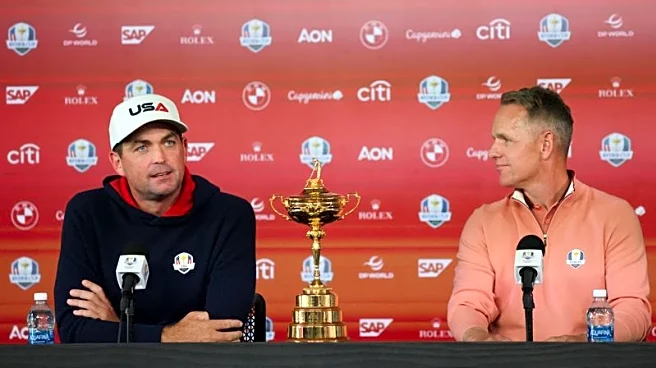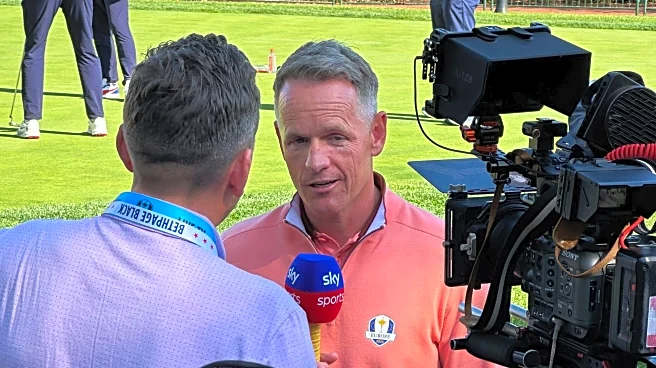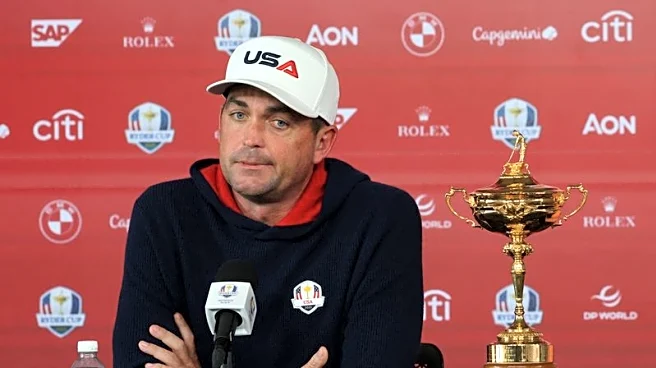What's Happening?
The PGA of America has increased the appearance fees for Team USA players participating in the Ryder Cup, allocating $500,000 per player. This includes a $300,000 donation to a charity of the player's choice and a $200,000 stipend for personal use. The change marks a significant increase from the previous $200,000 charitable donation per player, a figure that had remained unchanged for 25 years. The decision has sparked debate, as European players continue to participate without compensation, emphasizing the honor of representing their continent. Keegan Bradley, captain of Team USA, defended the payments, stating that they align with modern practices and will benefit charitable causes.
Why It's Important?
The increase in appearance fees for Team USA players could impact the dynamics of the Ryder Cup, potentially leading to criticism from fans and media. The decision highlights differing philosophies between American and European teams, with the latter maintaining a stance against payment for participation. This could influence public perception and create pressure on Team USA, especially if performance does not meet expectations. The move also reflects broader trends in sports where financial incentives are increasingly scrutinized, raising questions about the commercialization of prestigious events like the Ryder Cup.
What's Next?
As the Ryder Cup approaches, the focus will be on how Team USA handles the potential backlash from fans and media regarding the increased fees. The performance of the team could be pivotal in shaping public opinion, with poor results possibly exacerbating criticism. The PGA of America may need to address concerns and justify the decision further, while Team Europe could leverage the situation to their advantage, emphasizing their commitment to tradition and pride over financial gain.
Beyond the Headlines
The decision to increase appearance fees for Team USA players may have long-term implications for the Ryder Cup and similar events. It raises ethical questions about the role of money in sports and the potential impact on player motivation and team dynamics. The contrasting approaches of the American and European teams could influence future negotiations and policies within the sport, potentially affecting sponsorships, media coverage, and fan engagement.












